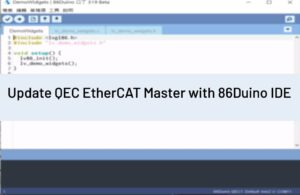[Constants]
描述
Integer constants are numbers that are used directly in a sketch, like 123. By default, these numbers are treated as int but you can change this with the U and L modifiers (see below).
Normally, integer constants are treated as base 10 (decimal) integers, but special notation (formatters) may be used to enter numbers in other bases.
| Base | 範例 | Formatter | 評論 |
| 10 (decimal) | 123 | 無 | |
| 2 (binary) | B1111011 | leading ‘B’ | only works with 8 bit values (0 to 255) characters 0-1 valid |
| 8 (octal) | 0173 | leading ‘0’ | characters 0-7 valid |
| 16 (hexadecimal) | 0x7B | leading “0x” | characters 0-9, A-F, a-f valid |
Decimal is base 10. This is the common-sense math with which you are acquainted. Constants without other prefixes are assumed to be in decimal format.
101 // same as 101 decimal ((1 * 10^2) + (0 * 10^1) + 1)
Binary is base two. Only characters 0 and 1 are valid.
B101 // same as 5 decimal ((1 * 2^2) + (0 * 2^1) + 1)
The binary formatter only works on bytes (8 bits) between 0 (B0) and 255 (B11111111). If it is convenient to input an int (16 bits) in binary form you can do it a two-step procedure such as:
myInt = (B11001100 * 256) + B10101010; // B11001100 is the high byte
Octal is base eight. Only characters 0 through 7 are valid. Octal values are indicated by the prefix “0”.
0101 // same as 65 decimal ((1 * 8^2) + (0 * 8^1) + 1)
*Warning:
It is possible to generate a hard-to-find bug by (unintentionally) including a leading zero before a constant and having the compiler unintentionally interpret your constant as octal.
Hexadecimal (or hex) is base sixteen. Valid characters are 0 through 9 and letters A through F; A has the value 10, B is 11, up to F, which is 15. Hex values are indicated by the prefix “0x”. Note that A-F may be typed in upper or lower case (a-f).
0x101 // same as 257 decimal ((1 * 16^2) + (0 * 16^1) + 1)
U & L formatters
By default, an integer constant is treated as an int with the attendant limitations in values. To specify an integer constant with another data type, follow it with:
- a
'u'或'U'to force the constant into an unsigned data format. Example:33u - a
'l'或'L'to force the constant into a long data format. Example:100000L - a
'ul'或'UL'to force the constant into an unsigned long constant. Example:32767ul
參考
- [程式語法] constants
- [程式語法] #define
- [程式語法] byte
- [程式語法] int
- [程式語法] unsigned int
- [程式語法] long
- [程式語法] unsigned long
語法參考主頁面
86Duino 參考的文本是根據 Creative Commons Attribution-ShareAlike 3.0 License,部分文本是從 the Arduino reference 修改的。 參考中的代碼示例已發佈到公共領域。



